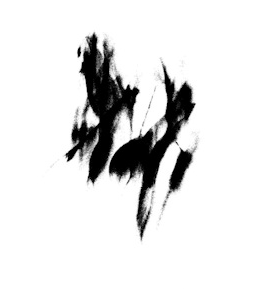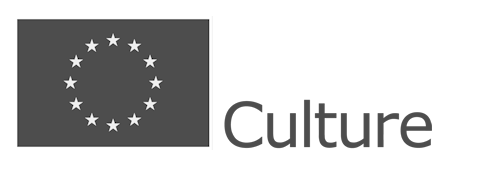
Coordinator:
Asociación Transdisciplinar REVERSO (Spanien) [http://www.reverso.org]
Partner:
Infomus – Universitá di Genova (Italien) [www.infomus.org/index_eng.php]
Trans-Media-Akademie Hellerau – (Deutschland) [www.t-m-a.de]
DAP-Lab – Brunel Universität West London – (Großbritanien) [http://people.brunel.ac.uk/dap]
K-Danse – (Frankreich) [www.k-danse.net/en]
STEIM – Studio for Electro-Instrumental Music – Amsterdam (Niederlande) [http://steim.org]
Fabrica de Movimentos – (Portugal) [www.fabricademovimentos.pt]
Palindrome Inter.media Performance Group – (BRD) [www.palindrome.de]
Autonome Universität Madrid – (Spanien) [www.uam.es/ss/Satellite/FilosofiayLetras/es/1242658464856/1242662690275/persona/detallePDI/Botella_Ordinas,_Eva.htm]
Kouros – Pablo Palacio y Muriel Romero (Spanien) [www.pablopalacio.com/SONIC_DANCE.html]
Innovalia Association – Bilbao (Spanien) [www.innovalia.org/en/]
METABODY
Media Embodiment Tékhne
and Bridges of Diversity
Start July 1. 2013 _ End : June 31. 2018
Introduction
METABODY will be a laboratory and observatory of cultural diversity that will highlight the importance of non-verbal communication and embodied expressions as a primary substrate of cultural heritage. The project will generate an understanding of the threats posed by the homogenising processes of globalisation and Information Society. Furthermore the project will produce new cultural, communicational and technological paradigms through interdisciplinary developments in new media and the arts, which foreground embodied expressions and interactions.
This will be accomplished through interdiciplinary research and creation by continuous collaboration between the partners; involvement of local communities of artists, researchers, social groups and wider audiences through workshops and public presentations; and the final construction and touring of a mobile laboratory, an experimental architectural structure that will contain interactive multisensory environments.
Metabody takes as a premise that bodily motion and non verbal communication, understood as changing repertoires of emotional expression and cognition, constitutes a foundation of sustainable cultural diversity, a changing matrix of embodied knowledge in permanent formation. This diversity is being undermined by the impact of information technologies, which are inducing an unprecedented standardisation of non-verbal, bodily and kinaesthetic communication processes, through the increasing reductionism of movement and the non-verbal spectrum to patterns of imitation and functionality.
Diversity is also undermined by the ways in which people across Europe and the world reproduce more and more the standardised gestures, ways of speaking and moving induced by mass media, publicity, interfaces, ubiquitous moving images, commercial music or video games; while in domains such as Robotics, Biometrics, Virtual Reality, Human Computer Interaction, Ergonomics and Artificial Intelligence there is an increasing and problematic attempt to simulate and repeat reduced repertoires of human emotions.
This homogenisation operates not only with regard to traditional cultural patterns but to the singular variations of each body, which accounts for the changing nature of cultural expressions as process of diversification.
Metabody builds upon the many fields of cognitive sciences that affirm that cognition and affects are embodied and relational processes, which take changing forms in different environments and are irreducible to standardised patterns of imitation, information and fixed meaning. Metabody aims at exploring the hitherto underestimated end of the communicative spectrum: the expressiveness of gesture and movement that exceeds categorisation and fixation into meaning structures as foundational for sustainable cultural diversity.
It is a common assumption in communication studies that in any interpersonal relations non-verbal communication constitutes 93% of what is being transmitted, and only 7% relates to verbal acts of meaning production. Yet the bodily spectrum of communication is minimized in Information Technologies, where functionality, textuality, identity and fixity of meaning production tend to leave aside or radically reduce the open resonances that give their opennes and flexibility to communication and relations.
What happens if we invert the habitual process undertaken in information technologies, so that instead of foregrounding meaning and function, we foreground the embodied expressive elements of communication, and the ways in which these exceed meaning structures? What new relational, cognitive and affective frameworks could be generated in this process through radically highlighting the openness of expressive qualities? How could this bring about an improvement for the lives of people who do not match the dominant structures of functionality and meaning, from disabled people to people from diverse cultural backgrounds, gender, or age groups?
Metabody will operate as a tékhne, a new bond of art and technology, which will generate new kinds of perceptions and embodied knowledge that puts more emphasis on movement, multiplicity and change, rather than homogenisation.
The project will embrace a highly transdisciplinary field, from dance and music to experimental architecture, from visual and media arts to cognitive sciences, from philosophy to alternative mathematics, from communication technologies to history of emotions, from the disabled to gender and cultural minorities. Over five years it will develop novel concepts of cultural diversity, embodiment, and technologies that will propose an alternative definition for traditional concepts such as space and social relations, based on movement and multisensory interaction.
The result will be an experimental architectural structure touring the 9 cities involved in the project that will host the laboratory and observatory of diversity. This structure is conceived as a sensitive space that can modify its characteristics according to certain expressive movement parameters that will be provided by the bodies interacting with it, transforming both its external appearance and internal elements of the structure such as digital sounds, videos, 3D compositions and lighting effects.
By expanding the awareness and potentials of embodied expression through interdisciplinary networks of artists, researchers and local communities it will generate unprecedented forms of cultural cross-fertilization fostering diversity as the flagship of European citizenship, highlighting the richness of European culture in new sustained networks of interaction.
The Metabody structure will be both a living archive of minoritarian cultural and affective expressions, an instrument for raising awareness of this fragile and changing yet fundamental heritage. It will also be a laboratory for new forms of embodiment, perception and awareness that highlight embodied specificity, hosting performances and installations, residencies with local artists, workshops and educational projects, developing new networks and communities of bodies, places and institutions in interaction with the Metabody, that will continue evolving after the project.
Metabody will outline and develop two novel domains of research and production:
to develop new approaches for the understanding of expression, emotion and cognition that do not aim to classify patterns, which always involves a reductionism, but to understand processes of change and diversification; to understand the processes of affective and cognitive homogenisation in current globalisation; and to foreground the changing features of embodied expression that are foundational to cultural diversity, sustainability, and heritage.
to generate new kinds of multisensory media environments, a novel technocultural paradigm for communication and the arts, which foregrounds embodied knowledge and cognition, augmenting our experience of the environment, generating new forms of awareness and (tele)presence, and opening up new horizons of diversity for cultural and embodied expressions, where the oldest and primary cultural heritage enters a sustainable, ecological and creative relation with new technologies.
Further informatione: www.metabody.eu
The Trans-Media-Akademie Hellerau and the METABODY project
Over the past thirteen years no other organization employed such depth with the cultural heritage of Dresden-Hellerau in the context of current developments of communication and perception technologies, as the Trans-Media-Akademie Hellerau did.
In artistic theming and elaborations to the "idea" Hellerau the body is reflected as culture-building instrument as medium in the form of performances and virtual environments by the protagonists of the association.
The association provides an infrastructure as well as an ideal way to take care and necessary activation and exploring alternative media technologies.
What was initiated at the Festspielhaus Hellerau with summer academies primarily at the level of producing technical shortcuts, artistic debugging and scientific reflecting since 1999 (Summer Academy for the training of theater artists and playwrights in dealing with new media, body - Computers - interaction, real-time and Presence - Composition virtual visual and sound rooms) and later on this basis, the workshops resulted in the composition stage and virtual interaction spaces, has now driven continuously in the Trans-Media Laboratory Hellerau in the historical building Hellerau German Workshops. The exploration and communication of the performative potential within virtual, networked sound-image-light environments are important focal points. In recent years the projects "European Tele-Plateaus" and "Holiday workshops" for pupils promote individual learning and performance potential in the development and testing of interactive image-sound environments.
"It's about nothing less than the exploration of virtual spaces of the bodily self, social and world perception. Transdisciplinarity and (re-)presence thereby form the connecting Impetus between Hellerauer ›Ur-Sprüngen‹* in the here and now. "(TMA founder Klaus Nicolai)
* >Ur-Sprünge< is a german wordplay refering to the syllable Ur, meaning ancient, the word Ursprung, meaning root or source, and the word Sprung, meaning a jump, refering to original dance culture in the Festspielhaus Hellerau.
FOR EU CULTURE PROGRAMME 2007-2013 Multiannual Cooperation

